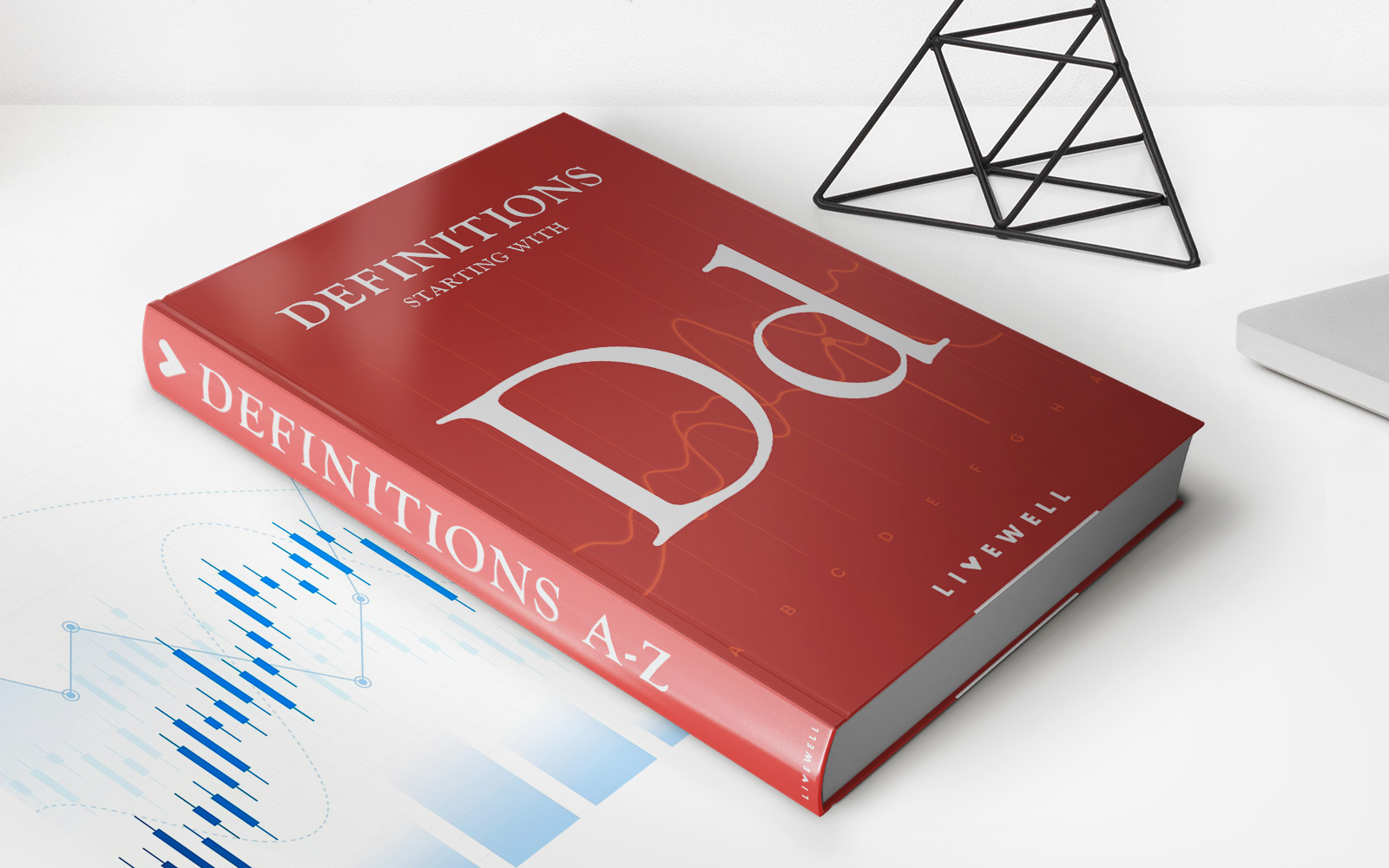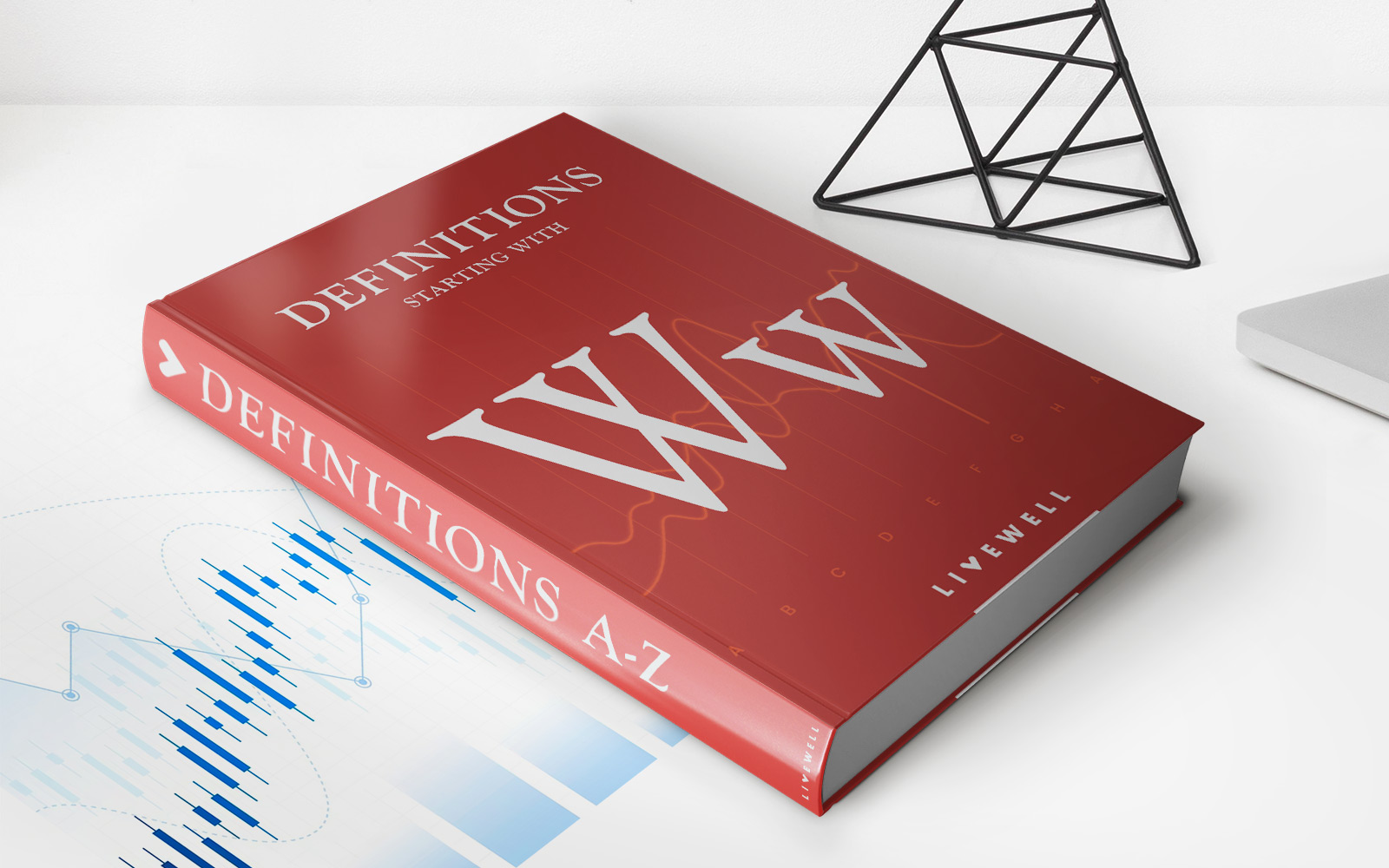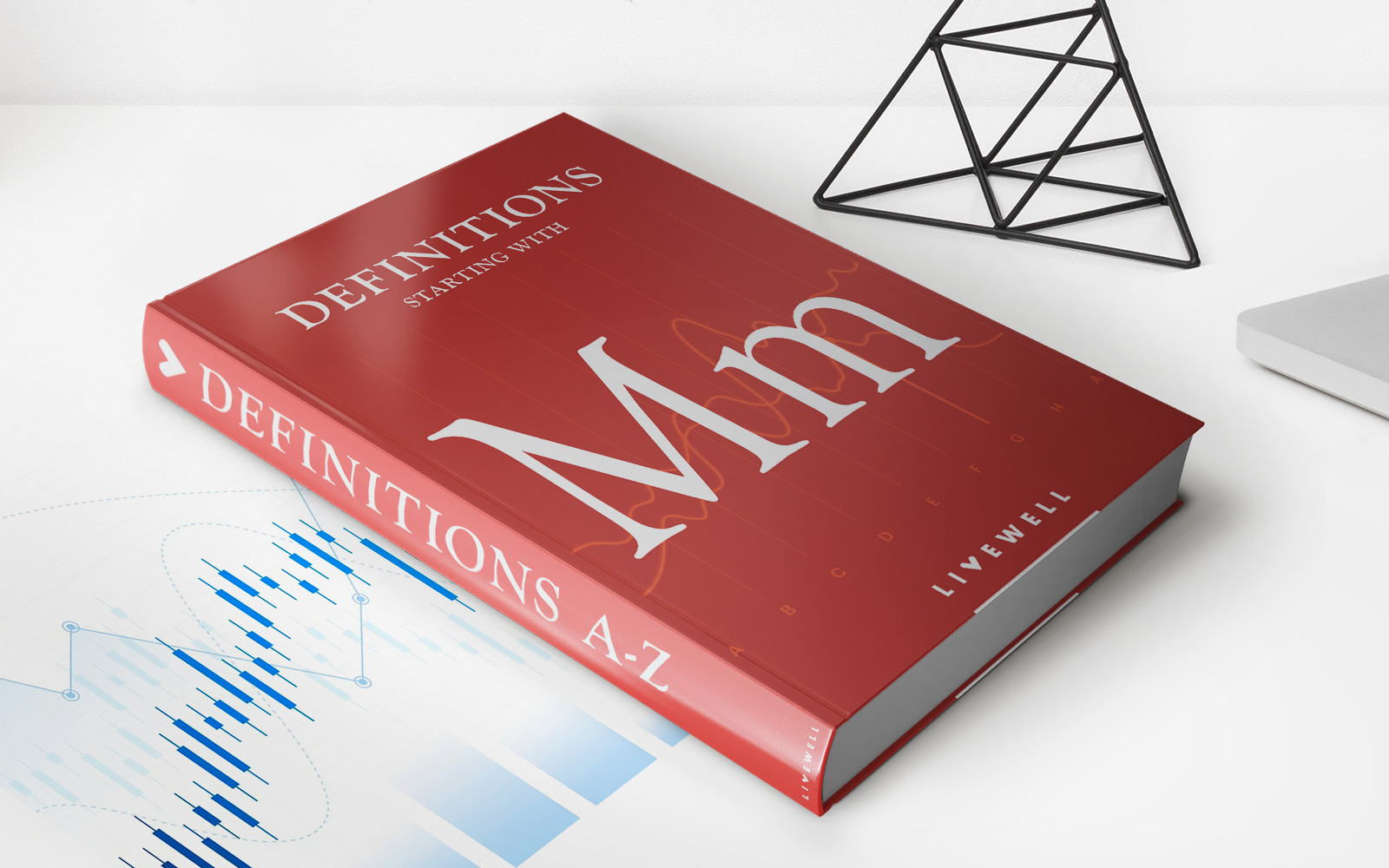

Finance
What Is A Disability Pension
Published: November 27, 2023
Learn about disability pensions and how they can provide financial support for individuals with disabilities. Get the information you need to understand this important aspect of finance.
(Many of the links in this article redirect to a specific reviewed product. Your purchase of these products through affiliate links helps to generate commission for LiveWell, at no extra cost. Learn more)
Table of Contents
Introduction
A disability pension is a financial benefit provided by the government or private organizations to individuals who are unable to work due to a disability. This pension is designed to provide financial assistance and support to individuals with disabilities who are unable to earn a regular income.
Disability pensions aim to provide a safety net for those who may experience barriers to employment or have limited earning capacity due to their disability. These pensions are an essential part of the social security system and help ensure that individuals with disabilities can maintain a decent standard of living.
The concept of a disability pension is rooted in the principle of social justice and equity. It acknowledges the additional challenges faced by individuals with disabilities in the workforce and seeks to address the economic hardships they may encounter.
Disability pensions are typically provided to individuals who have a significant and long-lasting disability that prevents them from engaging in gainful employment. The eligibility criteria and benefit payments may vary depending on the country, government policies, and the severity of the disability.
Definition of Disability Pension
A disability pension is a form of financial assistance provided to individuals who are unable to work due to a disability that significantly impairs their ability to earn a living. It is a social security benefit designed to provide financial support and security for individuals with disabilities.
The exact definition of a disability pension may vary depending on the country and the specific social welfare system in place. However, the fundamental principle remains the same: to provide financial aid to individuals whose disabilities prevent them from engaging in substantial and gainful employment.
Disability pensions are typically granted to individuals who have a long-term or permanent impairment that affects their physical or mental functioning. These disabilities may include physical disabilities, intellectual disabilities, chronic illnesses, mental health disorders, or a combination of these conditions.
The eligibility criteria for a disability pension often consider factors such as the severity of the disability, the impact it has on the individual’s ability to work, and the individual’s overall income and financial resources. In some cases, individuals may need to undergo medical assessments or provide documentation from healthcare professionals to support their disability claim.
Once approved, recipients of a disability pension are provided with regular financial payments to help cover basic living expenses and support their overall well-being. The amount of the pension may vary depending on factors such as the individual’s income, the severity of the disability, and the social security regulations of the specific country or organization providing the benefit.
It’s important to note that disability pensions are distinct from other forms of social security benefits, such as retirement pensions. Disability pensions specifically target individuals who are unable to work due to their disabilities and require financial assistance to maintain an adequate standard of living.
Eligibility Criteria for Disability Pension
The eligibility criteria for a disability pension vary depending on the country and the specific social welfare system in place. However, there are common factors that are typically considered when determining eligibility. Here are some key elements that are often taken into account:
- Medical documentation: Individuals applying for a disability pension will usually need to provide medical documentation that proves the existence and severity of their disabling condition. This may include medical records, diagnostic tests, and reports from healthcare professionals.
- Disability severity: The disability must be significant enough to prevent the individual from engaging in substantial, gainful employment. The severity determination may involve assessing the individual’s physical or mental capabilities, limitations, and overall functional impairment caused by the disability.
- Duration of disability: In most cases, the disability must be expected to last for a certain period of time, usually long-term or permanent. The specific duration requirement may vary, but the intent is to provide support for individuals with chronic impairments.
- Work history: Some disability pension programs may take into account an individual’s work history or employment record. This may include a minimum number of years worked or a certain level of earnings before becoming disabled.
- Income and financial resources: Depending on the program, there may be income or asset limits to qualify for a disability pension. This is to ensure that the benefit is targeted towards individuals who have limited financial resources and need assistance to meet their basic needs.
It’s important to note that the eligibility criteria can also vary based on the specific disability pension program or organization providing the benefit. Some countries offer different types of disability benefits based on the age of the individual, while others may have additional requirements for specific impairments.
Individuals interested in applying for a disability pension should consult the guidelines and requirements established by their country’s social welfare system or contact the relevant government agency or organization responsible for administering disability benefits. They can provide the necessary information and assistance in determining eligibility and completing the application process.
Application Process
Applying for a disability pension can seem like a daunting task, but with proper understanding of the process, it can be manageable. While the application process may vary depending on the country and the specific disability pension program, there are some general steps that are typically involved:
- Gather necessary documentation: Start by collecting all the necessary documents to support your disability claim. This may include medical records, diagnostic reports, treatment history, and any other relevant documentation that proves the existence and severity of your disability.
- Contact the relevant agency or organization: Reach out to the appropriate government agency or organization responsible for administering disability pensions. They can provide you with the necessary information, application forms, and guidelines. You can typically find contact information for these organizations on government websites or by contacting a local social services office.
- Complete the application: Fill out the disability pension application form thoroughly and accurately. Make sure to provide detailed information about your disability, medical history, work history, and financial situation if required. Attach any supporting documents that verify your disability and its impact on your ability to work.
- Medical assessments: Depending on the program, you may be required to undergo medical assessments to evaluate the severity of your disability. This may involve consultations with healthcare professionals, physical examinations, or psychological evaluations.
- Submit the application: Once you have completed the application form and gathered all the necessary documentation, submit your application to the appropriate agency or organization. Follow their instructions regarding submission methods, such as online submission, mailing, or in-person delivery.
- Follow up and communicate: After submitting your application, it’s important to follow up with the agency to ensure that your application is being processed. You may need to provide additional information or attend interviews or hearings to evaluate your eligibility for the disability pension.
- Review and decision: The agency will review your application, along with all the supporting documents and medical assessments. They will assess your eligibility based on the criteria outlined by the disability pension program. The decision may take some time, so be prepared for a waiting period.
- Appeals process: In case your application is denied, most disability pension programs provide an appeals process. You can appeal the decision and provide any additional evidence or documentation to support your claim. Follow the instructions provided by the agency to initiate the appeals process.
It’s important to keep copies of all the documents you submit and maintain open communication with the agency or organization throughout the application process. If you have any questions or concerns, don’t hesitate to reach out for assistance.
Remember, every disability pension program has its own specific guidelines and requirements, so it’s essential to follow the instructions provided by the respective agency or organization to ensure a smooth application process.
Types of Disability Pension
There are various types of disability pensions available, depending on the country and the specific social welfare system. These pensions may differ in terms of eligibility criteria, benefit amounts, and the conditions under which they are provided. Here are some common types of disability pensions:
- Permanent Total Disability Pension: This type of disability pension is granted to individuals who have a permanent and total disability that completely prevents them from engaging in any form of gainful employment. The benefit amount is typically higher as it is designed to provide long-term financial support.
- Partial Disability Pension: A partial disability pension is awarded to individuals who have a disability that impairs their ability to work, but they are still capable of engaging in some form of employment. The benefit amount is generally adjusted based on the degree of impairment and the individual’s earning capacity.
- Temporary Disability Pension: Temporary disability pensions are provided to individuals who have a disability that is expected to improve over time. This type of pension offers financial support during the period of temporary disability when the individual is unable to work and earn a regular income.
- Veterans’ Disability Pension: In some countries, there are specific disability pension programs for military veterans who have sustained disabilities or injuries during their service. These pensions are tailored to meet the unique needs of veterans and may offer additional benefits and support services.
- Work Injury Disability Pension: Work injury disability pensions are available to individuals who have sustained a disability as a result of a work-related accident or occupational disease. The eligibility criteria and benefit amounts are typically determined by workers’ compensation laws and regulations.
- Disability Support Pension: This type of disability pension is offered in certain social welfare systems and provides financial assistance to individuals with disabilities who require ongoing support and have limited earning capacity.
The specific types of disability pensions available will depend on the country and the legislation in place. It’s important to consult the relevant social welfare agency or organization to understand the specific types of disability pensions offered in your jurisdiction and determine the most suitable program based on your circumstances.
It’s worth noting that some disability pension programs may also offer additional benefits, such as access to healthcare services, rehabilitation programs, vocational training, or support for independent living. These additional services can play a crucial role in helping individuals with disabilities improve their overall well-being and enhance their quality of life.
Calculation of Disability Pension
The calculation of a disability pension varies depending on the country and the specific social welfare system in place. It involves considering several factors, such as the individual’s income history, the severity of the disability, and the regulations governing the disability pension program. While the exact calculation method may differ, here are some common factors that can influence the determination of a disability pension:
- Income replacement ratio: Some disability pension programs aim to replace a certain percentage of the individual’s pre-disability income. This can range from a fixed percentage to a more complex formula based on factors like average earnings or career length.
- Earnings history: The individual’s income history, typically based on the number of years worked and the amount of income earned, may be taken into account when calculating the disability pension. This can help determine the level of financial support needed to replace the lost earnings due to the disability.
- Severity of disability: The severity of the disability can also influence the calculation. Some programs assign higher benefit amounts to individuals with more severe disabilities that significantly hinder their ability to work, while others may have fixed amounts based on disability categories or levels of impairment.
- Means-testing: In certain disability pension programs, the individual’s financial resources, such as savings, investments, or other sources of income, may impact the calculation of the pension. Means-testing ensures that the benefit is targeted to individuals with limited financial resources.
- Benefit caps and limits: Disability pension programs may impose certain caps or limits on benefit amounts to ensure the sustainability of the program and prevent abuse. These caps can be based on factors such as the national average wage or a predetermined maximum benefit amount.
Additionally, inflation adjustments, cost-of-living increases, or changes in the individual’s circumstances (such as changes in income, marital status, or dependency status) may also be considered in the ongoing calculation of the disability pension.
It’s important to note that the calculation method and specific factors influencing disability pension amounts can vary significantly between different social welfare systems. It is recommended to consult the guidelines and regulations of the relevant disability pension program in your country to have a clear understanding of how the pension is calculated and what factors are taken into consideration.
Lastly, it’s worth highlighting that disability pension amounts may be subject to periodic review and reassessment to ensure that the benefit continues to be appropriate and aligned with the individual’s circumstances and needs.
Benefits and Limitations of Disability Pension
Disability pensions provide numerous benefits to individuals with disabilities, offering financial support and stability during challenging times. Here are some key benefits of disability pensions:
- Financial Security: Disability pensions ensure a steady stream of income, providing individuals with financial security when their disabilities prevent them from earning a regular income. This helps cover essential living expenses, such as housing, food, healthcare, and other basic needs.
- Improved Quality of Life: By relieving financial burdens, disability pensions contribute to an improved quality of life for individuals with disabilities. They can have access to necessary medical treatments, assistive devices, and support services that enhance their overall well-being and functional abilities.
- Independence and Dignity: Disability pensions empower individuals to maintain their independence and live with dignity. They can cover the costs of personal care assistance, transportation, and modifications to their living environment, enabling them to participate in society and engage in daily activities.
- Social Inclusion: With financial support from disability pensions, individuals can actively participate in their communities and social events. They can engage in social activities, pursue hobbies, and connect with others, reducing the isolation and stigma often associated with disabilities.
- Support for Rehabilitation and Training: Disability pensions may offer additional support for rehabilitation programs and vocational training, helping individuals with disabilities acquire new skills, re-enter the workforce if possible, or engage in meaningful activities that improve their independence and self-sufficiency.
Despite the many benefits, disability pensions also have some limitations that should be acknowledged:
- Financial Constraints: Disability pensions may not always provide sufficient financial support to cover all the expenses associated with a disability. Individuals may still face challenges in meeting additional costs related to specialized healthcare, assistive devices, or modifications to their living spaces.
- Bureaucratic Processes: The application and assessment process for disability pensions can often involve complex paperwork and lengthy bureaucratic procedures. This can be daunting and time-consuming for individuals with disabilities, potentially leading to delays in receiving the benefits they need.
- Eligibility Criteria: The eligibility criteria for disability pensions can sometimes be strict and may not accommodate all individuals with disabilities. Some individuals who may have functional limitations but do not meet the specific criteria may not qualify for the pension, leaving them without the necessary financial support.
- Income and Asset Limits: Some disability pension programs have income or asset limits, which means that individuals with moderate savings or resources may not qualify for the full pension amount or may be excluded from the program altogether. This can create limitations for individuals who have worked and saved prior to becoming disabled.
- Dependence on Government Support: Relying solely on a disability pension for financial support may lead to a sense of dependency on the government. It is important to explore other opportunities, such as vocational training or employment support, to promote self-sufficiency and reduce long-term reliance on the pension.
Despite these limitations, disability pensions play a vital role in providing essential financial support and improving the lives of individuals with disabilities. They are a crucial component of social welfare systems and contribute to creating a more inclusive and equitable society.
Challenges and Issues with Disability Pension
While disability pensions provide important financial support to individuals with disabilities, there are several challenges and issues that can arise within disability pension systems. These challenges can vary depending on the country and the specific social welfare system in place. Here are some common challenges and issues associated with disability pensions:
- Complex and Lengthy Application Process: Applying for a disability pension can often involve complex paperwork, extensive documentation, and lengthy bureaucratic processes. This can create difficulties for individuals with disabilities who may already face significant physical, cognitive, or emotional challenges.
- Inconsistent Eligibility Criteria: Eligibility criteria for disability pensions may vary between different jurisdictions or programs, resulting in inconsistencies in determining who qualifies for support. This can lead to individuals with similar disabilities receiving different levels of assistance based on geographical factors or program-specific requirements.
- Lack of Awareness and Accessibility: Many individuals with disabilities may not be aware of the disability pension programs available to them or struggle to access relevant information and resources due to barriers such as limited accessibility of government websites or lack of outreach efforts targeting marginalized communities.
- Insufficient Benefit Amounts: In some cases, the benefit amounts provided by disability pensions may not adequately cover the additional costs associated with living with a disability. This can lead to financial hardships and difficulties in meeting essential needs, such as medical expenses, assistive devices, or accessible housing.
- Inadequate Support Services: Disability pensions often focus solely on financial assistance without providing adequate support services to individuals with disabilities. Additional services like rehabilitation programs, vocational training, or assistance with independent living may be lacking, impacting the overall well-being and self-sufficiency of beneficiaries.
- Lack of Employment Opportunities: Some disability pension recipients may face challenges in accessing suitable employment opportunities or returning to work due to the stigma associated with disabilities or inadequate support in the job market. This can perpetuate a cycle of dependency on the pension rather than empowering individuals to achieve financial independence.
- Difficulty in Assessing Fluctuating Disabilities: Some disabilities can fluctuate in severity over time, posing challenges in accurately assessing a person’s eligibility and benefit amount. Regular reassessments may be necessary, but delays or inconsistencies in the assessment process can impact the financial stability of individuals with fluctuating disabilities.
Addressing these challenges and issues requires ongoing efforts from governments, policymakers, and social welfare organizations. Improving the accessibility and efficiency of the application process, ensuring consistent and fair eligibility criteria, increasing public awareness of disability pension programs, and providing comprehensive support services are crucial steps towards creating an inclusive and equitable disability pension system.
Furthermore, collaboration and consultation with individuals with disabilities and disability advocacy organizations can help identify and address the specific needs and concerns of the disability community, ensuring that disability pensions effectively meet their intended purpose of providing financial security and support.
Conclusion
Disability pensions play a vital role in providing financial support and stability for individuals with disabilities who are unable to work. These pensions offer a lifeline to those facing significant barriers to employment, ensuring they have a safety net to meet their basic needs, access necessary healthcare services, and improve their overall quality of life.
While disability pensions have many benefits, there are also challenges and limitations that need to be addressed. Streamlining the application process, clarifying eligibility criteria, improving support services, and providing adequate benefit amounts are important steps towards creating a more equitable and accessible disability pension system.
It is crucial for governments, policymakers, and social welfare organizations to work together to overcome these challenges and continually improve disability pension programs. Seeking input from individuals with disabilities and disability advocacy groups is essential to ensure that disability pensions are responsive to the diverse needs of the disability community.
Ultimately, disability pensions are not just about financial assistance, but also about promoting inclusivity, independence, and dignity for individuals with disabilities. By providing the necessary support, accessibility, and opportunities, disability pensions can contribute to a more inclusive society that values the rights and well-being of all its members.
It is important to remember that disability pensions are part of a larger effort to create a society where individuals with disabilities are granted equal opportunities and are empowered to fully participate in all aspects of life. By addressing the challenges and continually improving disability pension programs, we move closer to achieving a more inclusive and equitable society for all.













